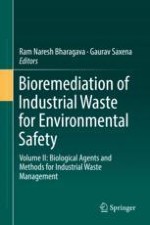2020 | OriginalPaper | Chapter
11. Toxic Metals in Industrial Wastewaters and Phytoremediation Using Aquatic Macrophytes for Environmental Pollution Control: An Eco-Remedial Approach
Authors : Mansi Rastogi, Meenakshi Nandal
Published in: Bioremediation of Industrial Waste for Environmental Safety
Publisher: Springer Singapore
Activate our intelligent search to find suitable subject content or patents.
Select sections of text to find matching patents with Artificial Intelligence. powered by
Select sections of text to find additional relevant content using AI-assisted search. powered by
